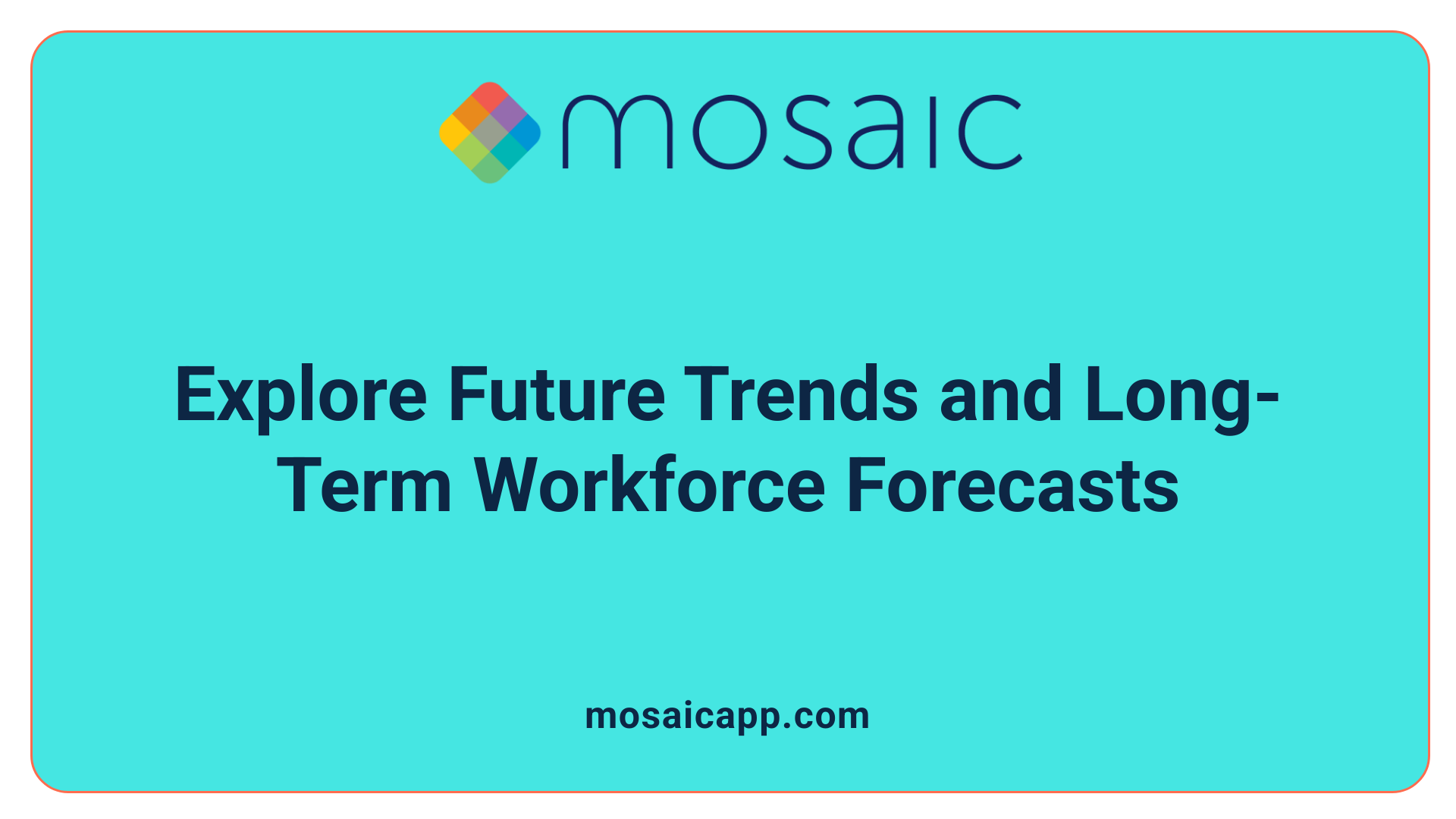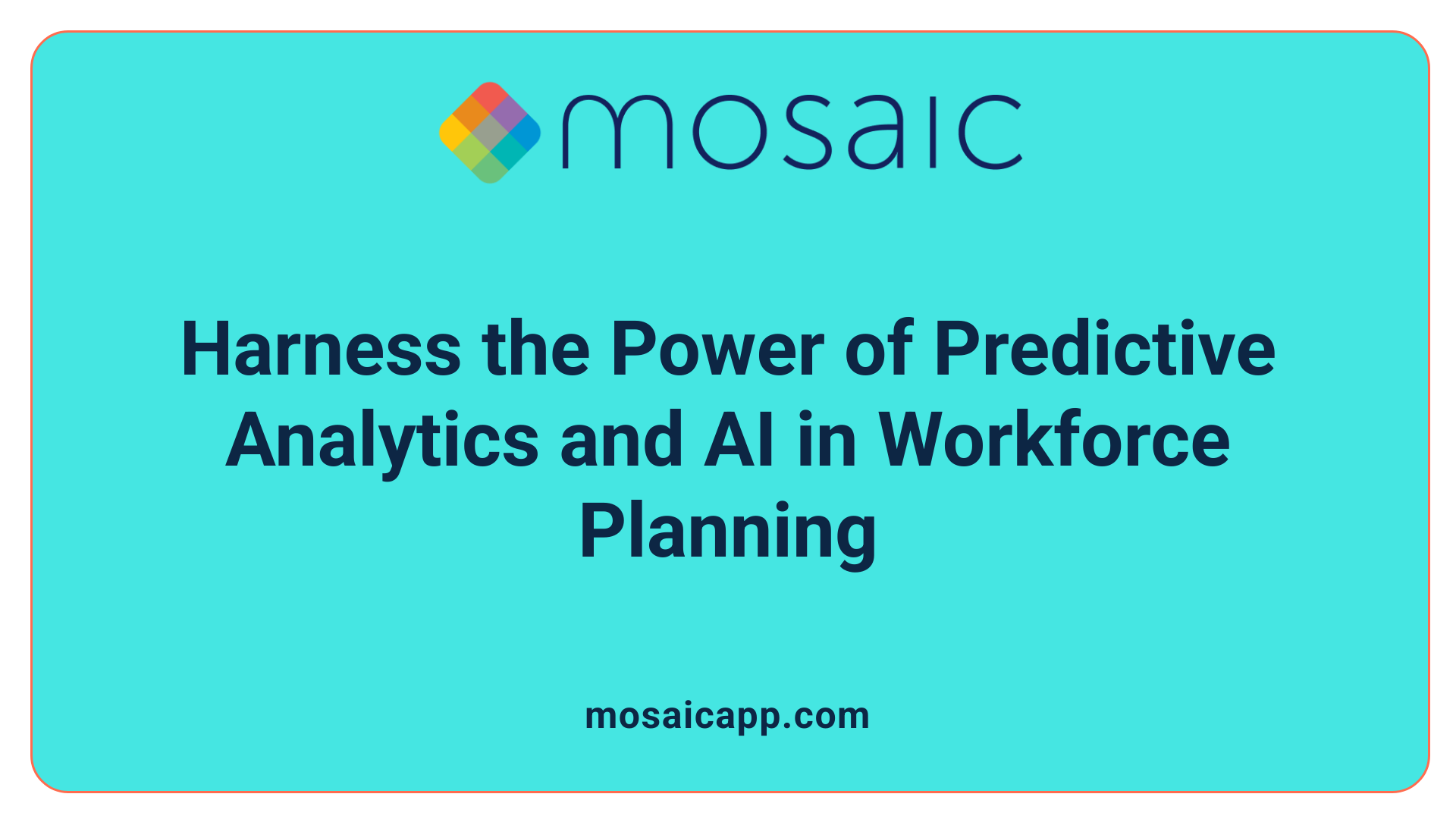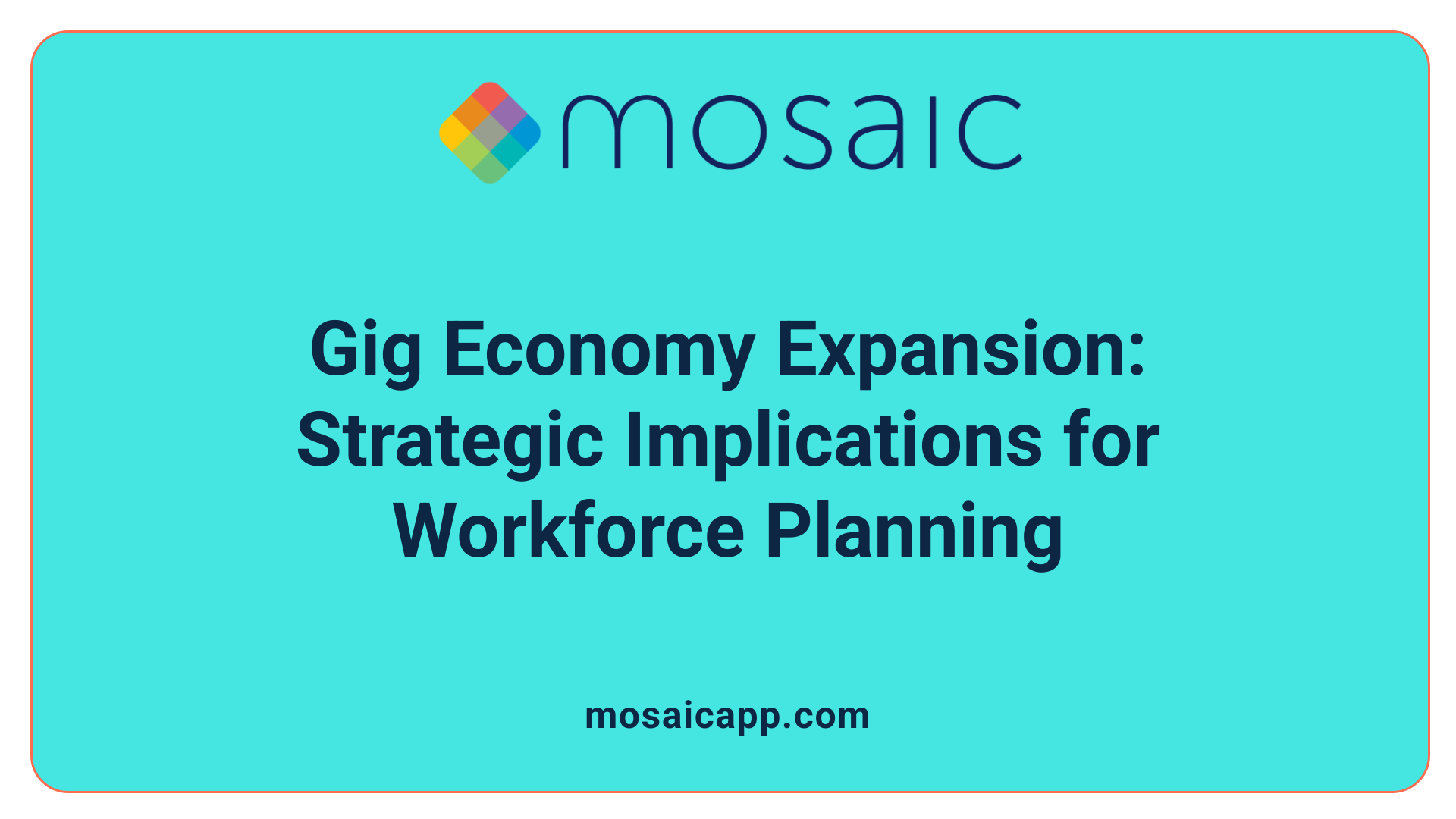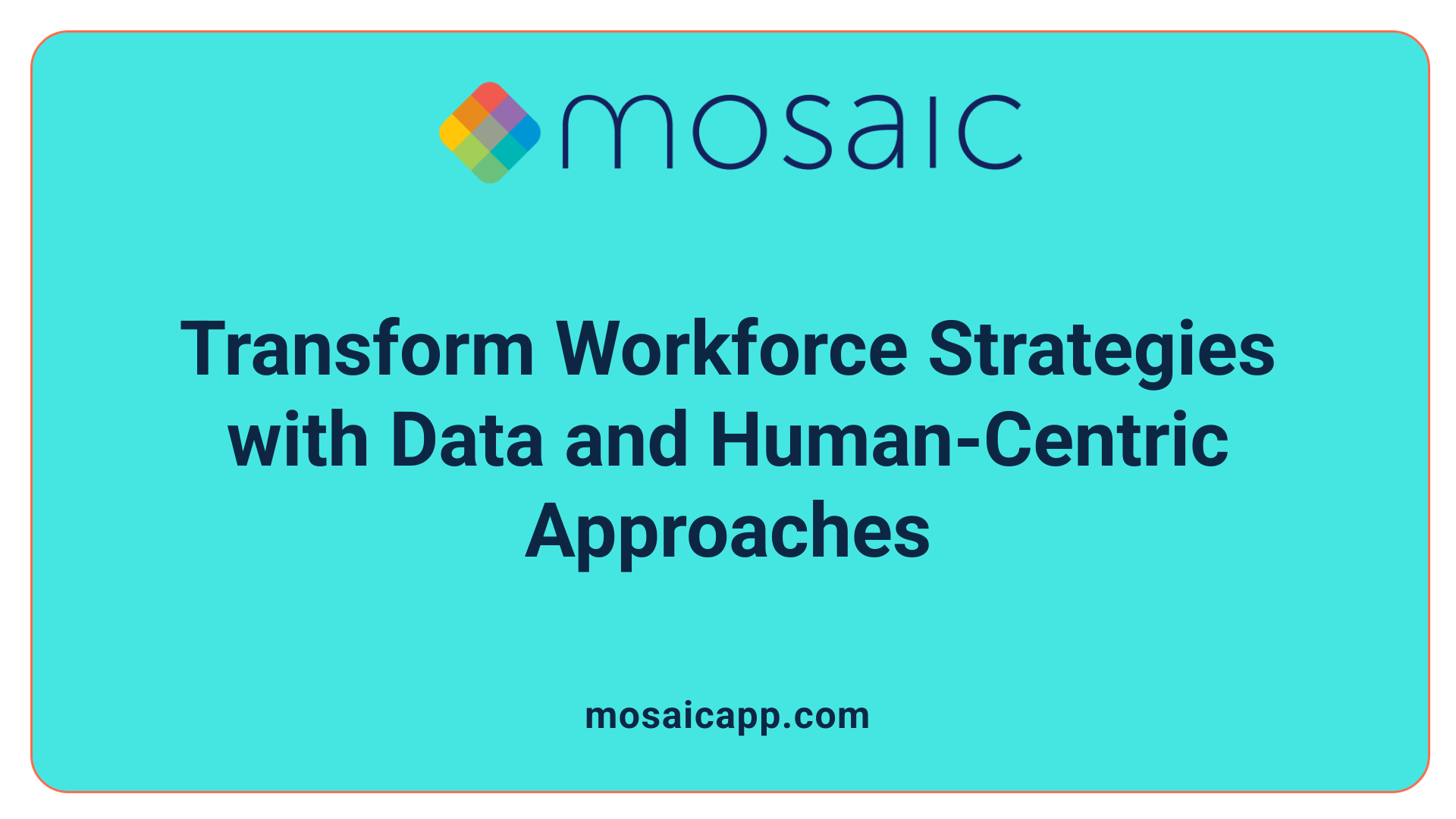Navigating the Evolving Landscape of Service Industry Staffing
The service sector is undergoing a seismic shift driven by technological innovations, changing workforce expectations, and an increasingly complex global talent landscape. As organizations strive for agility, resilience, and efficiency, workforce forecasting emerges as a strategic linchpin, enabling firms to anticipate staffing needs, address skills gaps, and adapt to market disruptions. This article explores the emerging trends, best practices, and strategic implications shaping the future of workforce forecasting in service-based firms beyond 2025, providing insights into how businesses can leverage technology and data-driven strategies to secure a competitive edge.
Emerging Trends and Long-Term Forecasting in Service Industries

What are the future trends and developments in workforce forecasting for service-based firms?
Looking ahead, workforce forecasting in the service sector will increasingly rely on sophisticated technologies such as artificial intelligence (AI), automation, and predictive analytics. These tools enable organizations to make more precise and real-time predictions about future staffing needs, helping them adapt swiftly to market and operational changes.
The gig economy will continue to influence how firms source talent. Companies are likely to expand their talent pipelines globally by engaging freelancers and independent contractors across borders, which offers flexibility and access to diverse skill sets.
Digital innovations like digital twins and AI-driven simulations will revolutionize scenario planning. These tools will allow businesses to incorporate external factors, such as market shifts and technology developments, into their workforce models. This dynamic approach supports strategic agility.
Reskilling and upskilling initiatives will become crucial. As technological demands increase, especially in sectors focusing on sustainability and digital transformation, organizations will prioritize continuous learning to fill evolving skill gaps.
Furthermore, diversity, equity, and inclusion efforts will be embedded into workforce planning, fostering creativity and better decision-making.
Overall, the future of workforce forecasting is set to be more integrated with advanced technology and strategic insights, ensuring that service-based firms can respond proactively and efficiently amidst rapid digital and global transformations.
The Growing Role of Predictive Workforce Planning and Technology
 Predictive models and tools form the backbone of modern workforce planning, especially as organizations navigate rapidly changing market landscapes. These advanced systems employ sophisticated statistical techniques, machine learning algorithms, and artificial intelligence to analyze vast amounts of employee data.
Predictive models and tools form the backbone of modern workforce planning, especially as organizations navigate rapidly changing market landscapes. These advanced systems employ sophisticated statistical techniques, machine learning algorithms, and artificial intelligence to analyze vast amounts of employee data.
By doing so, they forecast future staffing needs, identify potential skills gaps, and predict turnover rates. These insights enable organizations to develop proactive talent management strategies and make informed decisions about hiring, training, and resource allocation.
Popular platforms like Anaplan, Visier, Workday, LotusOne, and Cube Software offer various functionalities, such as real-time insights, demand forecasting, automated scheduling, and comprehensive workforce analytics. These tools provide scalable solutions that adapt to organizational needs, supporting scenario analysis to stress-test assumptions and prepare for different future scenarios.
Key features of these predictive systems include automation to reduce manual efforts, flexible reporting options, and employee engagement metrics. They support strategic tasks like succession planning, optimizing hiring processes, and minimizing turnover risks.
Technological innovations continue to influence workforce forecasting significantly. AI-driven predictive analytics can analyze patterns arising from external factors like industry trends, economic shifts, and seasonal fluctuations. Data-driven decision-making becomes more accurate, enabling companies to respond swiftly to emerging challenges.
Furthermore, the integration of digital tools such as real-time dashboards, scenario modeling, and employee self-service platforms enhances overall agility. These advancements help organizations not only anticipate future workforce demands but also improve operational efficiency, reduce costs, and foster a resilient, future-ready workforce.
Strategic Workforce Planning for Resilient Operations
How will changes in the skills landscape and talent management influence future workforce planning?
The rapid evolution of technology and a growing focus on sustainability are reshaping the skills required in the workforce. Future planning will prioritize ongoing reskilling and upskilling initiatives, ensuring employees develop the competencies necessary for emerging roles.
Organizations will integrate sustainability principles into their talent strategies, aligning hiring, performance management, and leadership development with social and environmental goals. This shift emphasizes building internal talent pools through data-driven insights, which help identify skills gaps and foster internal mobility.
Flexible staffing models like remote work, outsourcing, and diversifying talent sources will boost organizational agility. This approach allows firms to adapt quickly to industry changes and reduces reliance on costly external hiring.
In summary, focusing on cultivating internal talent, promoting continuous learning, and fostering inclusive, future-ready cultures will be essential. These strategies will help organizations meet evolving industry demands and sustain growth.
How are workforce management strategies expected to evolve beyond 2025?
Post-2025, workforce management is expected to become more sophisticated and human-centered. Upskilling and reskilling will be central as automation and AI transform the nature of work.
Organizations will leverage real-time data, predictive analytics, and AI insights to preempt skills shortages, optimize resource deployment, and increase operational flexibility. Hiring for new, emerging skill sets and supporting internal staff transitions will be prioritized to foster resilient talent pools.
Diversity, equity, and inclusion initiatives will be integral, ensuring broader talent access and innovation. Employee well-being and experiences will be enhanced through flexible work arrangements and hybrid models.
Overall, workforce strategies will increasingly rely on a data-driven approach; integrating technology with continuous learning and organizational agility, to effectively navigate an increasingly complex global environment and maintain competitive advantage.
Future Workforce Planning and Trends
| Aspect | Description | Impact |
|---|---|---|
| Skill Development | Emphasis on reskilling, upskilling, sustainability-focused competencies | Ensures future readiness and internal talent strength |
| Data & Analytics | Use of real-time data, AI-driven insights for decision-making | Improves foresight and agility in workforce planning |
| Flexible Staffing | Remote work, outsourcing, gig work, diverse talent pools | Enhances organizational resilience and adaptability |
| Talent Strategy | Focus on internal mobility, inclusive cultures, strategic hiring for emerging skills | Builds sustainable, innovative workforce |
| Employee Well-being | Hybrid models, work-life balance, personalized development | Boosts retention and engagement |
As workforce strategies continue to evolve, organizations that embed agility, data intelligence, and human-centric practices will set the foundation for resilient and competitive operations in the years ahead.
Technology and Innovation Driving Workforce Forecasting

How are technological innovations, including AI-driven scheduling and employee rostering, influencing workforce forecasting?
Technological innovations are transforming how organizations plan and manage their workforce. AI-driven scheduling and employee rostering tools are at the forefront of this change, enabling more precise and responsive workforce forecasting.
These advanced systems leverage AI algorithms to analyze various data points, such as employee skills, availability, and workload patterns. This allows companies to create schedules that not only meet current demand but also anticipate future needs more accurately.
By using scenario-based planning, organizations can simulate different market or operational conditions to prepare for potential disruptions or peaks in demand. This proactive approach ensures staffing levels remain optimal, reducing costs and improving service levels.
The integration of advanced analytics further enhances forecasting capabilities. These tools identify skill gaps early, recommend internal talent redeployments, and support better recruitment strategies. They also streamline HR tasks like prescreening and onboarding through predictive and virtual assistant technologies.
In the context of emerging technologies, such as generative AI, these systems are becoming more sophisticated, offering insights that were previously difficult to obtain. They help companies adapt quickly during periods of rapid technological change, develop internal capabilities, and sustain organizational agility.
Overall, AI-powered scheduling, rostering, and analytics enable organizations to adopt a more dynamic, data-driven approach to workforce management, positioning them to thrive amid ongoing technological evolution and market fluctuations.
The Rise of Gig Economy and Its Strategic Impact

How will emerging trends like AI, automation, and the gig economy impact workforce planning?
The expansion of the gig economy, projected to grow from $646.77 billion in 2025 to a staggering $2.1 trillion in 2033, is reshaping how organizations approach workforce management. This growth underscores the shift towards flexible staffing models where companies increasingly hire globally to meet complex project demands and build resilience amid regional and global disruptions.
Technological advancements play a crucial role in this transformation. AI, automation, and digital platforms enable gig work by providing on-demand access to specialized skills and facilitating remote collaboration. These tools support real-time performance monitoring, making gig roles more efficient and aligned with organizational needs.
However, this shift introduces challenges as well. With more workers engaged in gig roles, organizations must adapt their workforce planning processes. This includes developing strategies to nurture employees’ digital and soft skills, establishing clear policies for gig worker classification, and ensuring protections for non-traditional workers. Additionally, internal gig platforms are used to deploy talent strategically, coordinating flexible labor while maintaining compliance and quality.
Balancing human skills with AI and automation advances, businesses are leveraging these trends to boost productivity and foster innovation. They are also considering the implications for job security and income stability. Overall, workforce planning is evolving into a more dynamic, data-driven practice that prioritizes agility, inclusivity, and strategic talent deployment in this rapidly changing landscape.
Strategic Implications and Future Landscape in Service Sector Workforce Planning
What are the strategic implications of evolving workforce forecasting techniques for service-based firms?
The adoption of advanced workforce forecasting tools, driven by technologies like artificial intelligence (AI), machine learning, and real-time data analytics, has profound effects on strategic planning for service organizations. These techniques enable more precise and adaptable talent management, empowering firms to anticipate future workforce needs with greater confidence.
One major advantage is enhanced agility in resource allocation. Service firms can better identify emerging skills gaps, optimize staffing levels, and deploy talent more effectively, reducing operational costs and improving customer service quality. This proactive approach allows organizations to prepare for industry shifts, such as technological innovations or increased demand during peak seasons.
Furthermore, scenario planning becomes more sophisticated, integrating external labor market trends and organizational growth forecasts. This broadens the strategic horizon, allowing firms to craft contingency plans for different future conditions, thus bolstering resilience.
Embedding these forecasting methods within the wider strategic framework fosters better alignment between human capital and business objectives. It enables a long-term focus on talent development and inclusion, ensuring diverse skills and perspectives within distributed teams.
In summary, evolving workforce forecasting methods are vital for service companies aiming to stay competitive. They support sustainable growth, cost efficiency, and the capacity to adapt quickly to industry and market changes, ultimately shaping a resilient and innovative service sector future.
Adopting Data-Driven and Human-Centered Workforce Strategies
 In the rapidly evolving landscape of workforce management, integrating data analytics into strategic planning is transforming how organizations predict staffing needs and manage talent. Effective workforce forecasting in service industries relies on advanced predictive tools, such as AI-powered analytics, to analyze historical data, market trends, and internal organizational goals. These models incorporate real-time data to enhance accuracy and enable continuous updates, allowing companies to adapt swiftly to seasonal fluctuations, market shifts, and unexpected disruptions.
In the rapidly evolving landscape of workforce management, integrating data analytics into strategic planning is transforming how organizations predict staffing needs and manage talent. Effective workforce forecasting in service industries relies on advanced predictive tools, such as AI-powered analytics, to analyze historical data, market trends, and internal organizational goals. These models incorporate real-time data to enhance accuracy and enable continuous updates, allowing companies to adapt swiftly to seasonal fluctuations, market shifts, and unexpected disruptions.
Best practices include centralizing data sources to maintain consistency and involving stakeholders across departments to validate forecasts. Sensitivity to external factors such as customer demand and industry trends improves model robustness. Flexibility in modeling allows organizations to run multiple scenarios, helping to prepare for various future states and prevent both overstaffing and understaffing.
Regular review and alignment of forecasts with operational and HR systems are critical for ensuring optimal staffing levels. These practices lead to improved service quality, reduced labor costs, and higher employee satisfaction. The integration of forecasting with real-time dashboards and scenario analysis tools supports proactive decision-making, aligning workforce capacity with business priorities.
As technological innovations like AI and automation advance, organizations can model complex workforce scenarios more accurately. This approach not only enhances efficiency but also positions firms to respond swiftly to market and technological changes, securing competitive advantage.
Below is a summary of best practices for workforce forecasting in service industries:
| Practice Area | Recommended Approach | Additional Details |
|---|---|---|
| Data Collection | Centralize and ensure data quality | Use combined internal and external sources |
| Model Flexibility | Incorporate multiple scenarios | Adapt models for seasonal and unforeseen events |
| Stakeholder Engagement | Involve cross-departmental teams | Validate forecasts with operational insights |
| Continuous Review | Regularly update models | Reflect new data, market changes, and lessons learned |
| System Integration | Embed forecasting tools into HR and operations | Facilitate real-time adjustments and strategic planning |
The shift toward human-centered skills development, driven by technological change, will also influence future workforce planning. Organizations are increasingly focusing on reskilling and upskilling initiatives to fill skill gaps identified through data insights. Emphasizing continuous learning, internal mobility, and inclusive cultures will help develop resilient, adaptable workforces.
In sum, leveraging data analytics for workforce forecasting enables organizations to anticipate staffing needs effectively, align talent strategies with business goals, and foster sustainable growth amid evolving industry requirements.
Harnessing Future Opportunities and Managing Risks
The future of workforce forecasting in service-based firms hinges on technological innovation, strategic agility, and a deep understanding of evolving workforce dynamics. By embracing predictive analytics, AI, and flexible staffing models, organizations can better anticipate future needs, optimize talent management, and sustain competitive advantage. However, these advancements also necessitate proactive risk management, continuous learning, and a strong organizational culture that values inclusion, adaptability, and human-centric approaches. As firms navigate this complex landscape, those who strategically leverage insights, foster internal talent, and adapt swiftly to industry shifts will unlock new growth opportunities and build resilient, future-ready workforce ecosystems.
References
- Here's how the future of workforce management will look like!
- Strategic workforce planning in the age of gen AI
- Workforce forecasting: The smart staffing strategy
- The Future of Workforce Planning: Trends and Predictions ...
- Workforce Forecasting - Aspect
- Workforce Forecasting | How to Plan for Future Labor Needs
- Workforce Forecasting: Plan Staffing Needs With Precision
- Workforce Forecasting: Methods, Models & Best Practices


